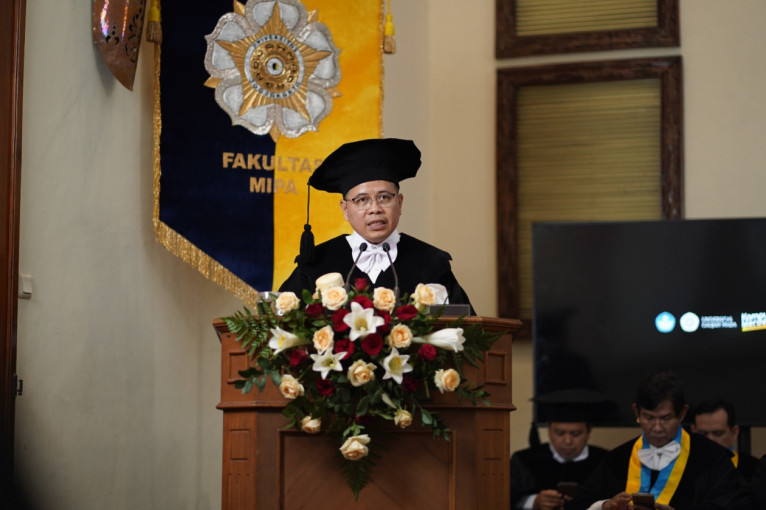
Dr. Tri Joko Raharjo, a lecturer in the Department of Chemistry at the UGM Faculty of Mathematics and Natural Sciences, was inaugurated as a professor of chemistry on Tuesday (November 7) at the UGM Senate Hall.
On that occasion, he delivered an inaugural speech titled “Bioactive Peptides as an Alternative Source in the Development of New Drug Compounds.”
Professor Raharjo explained that peptide-based drug compounds are not something new. For a long time, penicillin antibiotics have been known, which are peptide derivative structures composed of amino acids such as adipic acid, cysteine, and valine.
However, the diversity of peptide structures, amino acid combinations, and their modifications have been reported to give rise to various biological activities.
According to him, bioactive peptides offer advantages compared to small molecule synthesis. Besides the variety of structural frameworks and functional groups not inferior to synthetic molecules, peptide production is relatively easier, considering their stereoisomers.
“Peptides can be considered as endogenous molecules, so peptide-based drugs also offer advantages in terms of safety,” explained the Head of the UGM Master’s Program in Chemistry.
Furthermore, Professor Raharjo elaborated that peptides are a fascinating target for developing drug compounds whose mechanisms are based on interactions with receptors.
These bioactive peptides can be found as free compounds in living cells and used as antimicrobials with activity against bacteria, fungi, and viruses.
Bioactive peptides also serve as anti-cancer agents, such as soy protein hydrolysate, bean protein hydrolysate, and microalgae protein hydrolysate.
They can also be used for anti-hypertension purposes, for instance, those derived from egg white protein, milk protein, pea protein, and fermented milk.
Anti-diabetic bioactive peptides can be derived from animal proteins such as deer antler protein, Boarfish protein, shrimp protein, camel milk, and plant proteins, including quinoa cereal protein, barley cereal protein, and wheat gluten.
The professor mentioned the application of bioactive peptides for functional foods, neutraceuticals, and food preservatives can be done in the form of fermented foods. However, as compounds, peptides require a simple and sustainable production process.
“Bioactive peptides identified from various protein hydrolysates cannot be easily obtained in large quantities through isolation and purification processes as during peptide identification,” he said.
He continued that recombinant DNA technology could be an attractive option for peptide production. This method has advantages over small molecule production because peptides are made as protein fusions, the first gene expression products.
This differs from small molecules, which may involve several genes coding for their biosynthetic processes. In addition to being overexpressed to obtain products in large quantities, the purification process is also relatively simple.
In conclusion, he emphasized that bioactive peptides have the potential for a wide range of applications as new drug compounds with various clear activities and molecular-level mechanisms.
Bioactive peptides offer a safe system for medical treatment and food preservation.
Author: Ika
Photographer: Firsto

